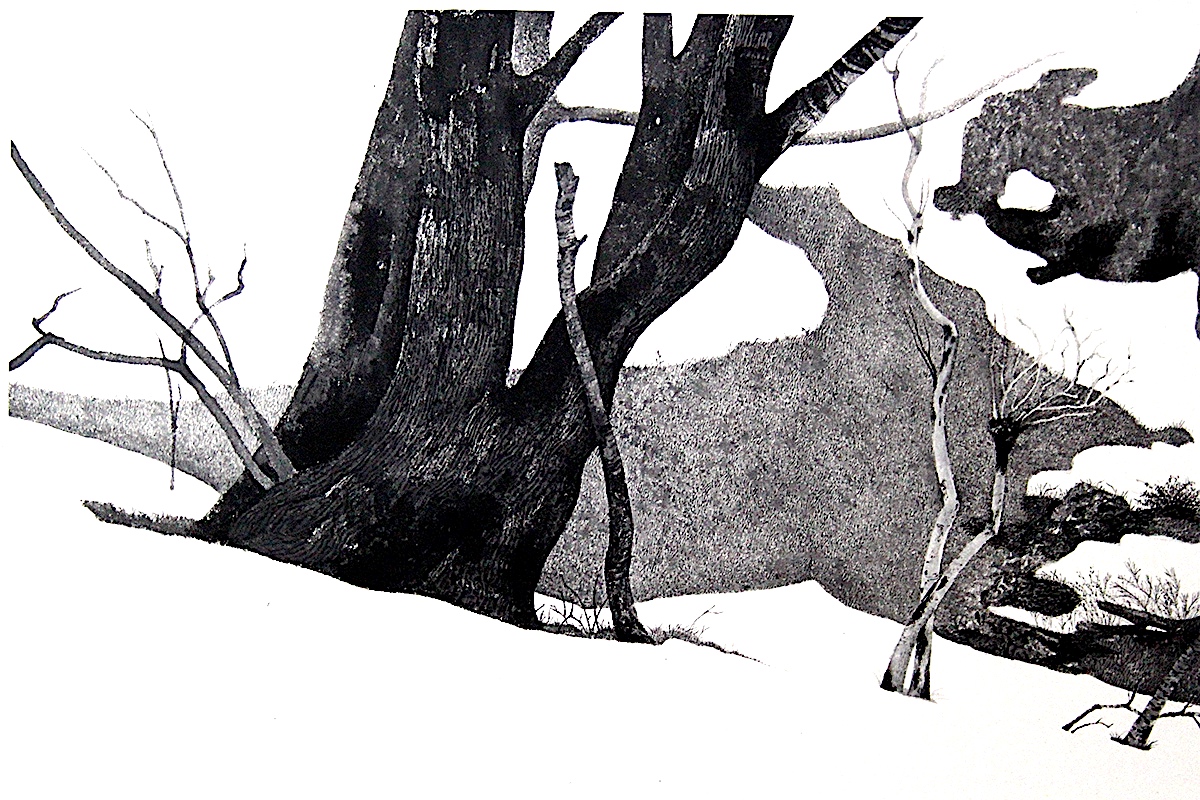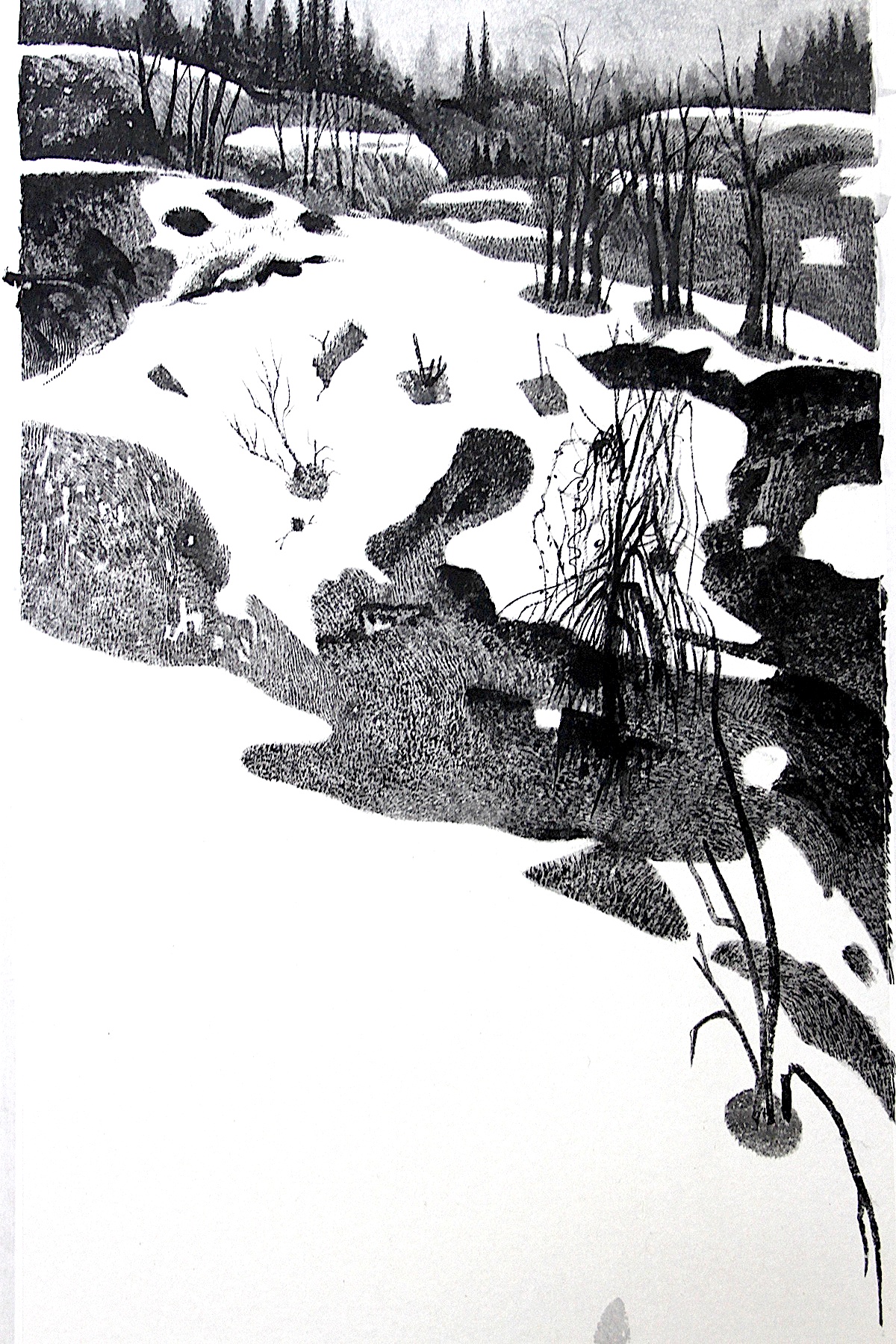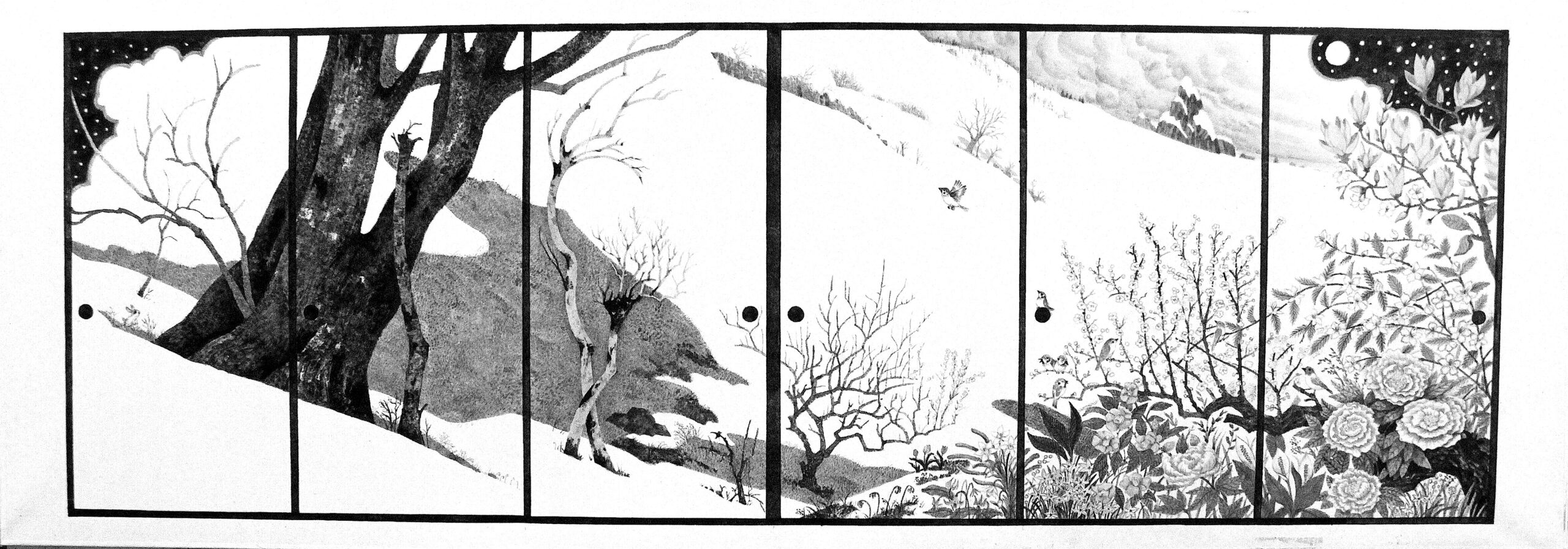蓮華寺ふすま絵と墨描画。
数年前より、中国北宋と、室町から江戸末期の絵画を研究し、いわゆる滲みの水墨画ではなく、墨で鮮明に描く絵画「墨描画」でふすま絵を制作しました。
その手法には、大小の関係により空間を示す日本画のエッセンスを取り入れながらも、浮世絵のような画面の縦の空間的広がりではなく、パースを効かせて、遠近法的に奥行きを出しているところから西洋と東洋のミックスした表現と言えるでしょう。墨の持つ黒一色で描きながらも、風景を真摯に見つめ、美しいトーンの色調をコントロールし、画面全体、あるいは襖が置かれている空間全体に静謐な佇まいを感じさせているのも魅力的です。
For several years, I have been studying Chinese Northern Song and paintings from the Muromachi to the end of the Edo period to create fusuma-e (fusuma paintings) using sumi-graphy, a painting in which the ink is used to draw clearly, rather than what is called “suiboku-ga” (ink painting with blotches).
His technique incorporates the essence of Japanese painting, which shows space by the relationship between large and small, but instead of the vertical spatial expansion of Ukiyo-e, he uses perspective to create depth in perspective, which is a mix of Western and Eastern expression. It is also fascinating that although the painting is done in black, which is the characteristic color of sumi ink, the artist earnestly looks at the landscape and controls the beautiful tones, giving the entire screen or the entire space where the sliding doors are placed a tranquil appearance and flow.









